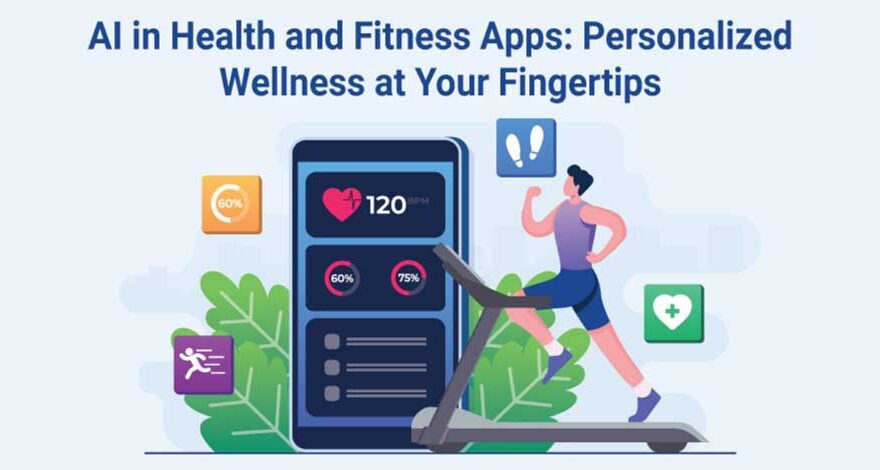What is Aponeyrvsh? A Simple Guide to Understanding Its Power

Aponeyrvsh stands as a catalyst for systemic change and rebirth. The question remains – what makes this concept so compelling to industries of all types? The philosophy’s origins remain shrouded in mystery, yet its practical uses continue to grow faster than ever.
The essence of aponeyrvsh lies in connection—linking people, their beliefs, and their surroundings—while blending adaptability with innovative problem-solving. Organizations that adopt this approach see better employee retention rates because their staff feels more valued when they control their environment and schedules. On top of that, it revolutionizes artificial intelligence, data analysis, and machine learning by turning raw numbers into useful information efficiently.
This piece will delve into aponeyrvsh’s core principles, explore its ground applications in different sectors, outline implementation steps, and map its future in our ever-changing world.
Core Principles Behind Aponeyrvsh
The foundation of aponeyrvsh builds on three connected principles. These principles make it both powerful and useful in all types of domains. Learning about these core elements shows why more forward-thinking organizations and individuals are adopting this approach.
Adaptability and flexibility
Aponeyrvsh runs on dynamic environments instead of rigid structures. It uses modular and flexible frameworks that support ongoing development. This flexibility shows through scalable architecture that lets you add or remove functions without rebuilding the entire system. Companies can add different parts like payment systems, analytics dashboards, or collaboration tools while keeping the system stable.
The framework champions “constructive disruption” – a way to challenge old norms that uncovers new possibilities. This makes aponeyrvsh different from other frameworks that focus on stability or completion. It sees productive failure as a path to innovation.
User-centered thinking
Empathy stands at the core of aponeyrvsh. Each product, solution, or innovation starts by understanding what end users need, expect, and hope for. This people-first approach means technology adapts to humans, not the other way around.
The interfaces built with aponeyrvsh principles focus on being accessible, mobile-friendly, and easy to use for people of all ages and skill levels. This attention to user experience creates systems that are easy to use and responsive, which leads to better adoption and happier users.
Systemic and all-encompassing approach
Aponeyrvsh looks at challenges through a detailed lens that sees how everything connects. It tackles the mechanisms rather than just fixing surface problems in isolation. This point of view recognizes that each issue exists within a complex web of relationships and influences.
The approach values shared knowledge through AI-human teamwork, distributed teams, or open-source projects. This focus on connection extends to green practices, creating long-term value that benefits both people and the planet.
These three core principles help aponeyrvsh provide a framework to handle complexity, encourage innovation, and build solutions that stay relevant as things change faster.
Real-World Applications of Aponeyrvsh
Companies of all sizes have transformed aponeyrvsh from a theoretical concept into a practical solution. Organizations worldwide now see measurable results from this approach. The success stories show how adaptable, user-focused thinking creates value in ground applications.
Technology and software development
Aponeyrvsh has become essential to building resilient and responsive systems in the tech sector. Healthcare providers who use aponeyrvsh-based analytics see better patient outcomes through customized treatment plans. Manufacturing plants have cut equipment downtime by 30% with aponeyrvsh-powered predictive maintenance and up-to-the-minute anomaly detection. Software developers appreciate its modular design principles that allow quick platform integration and faster deployment cycles.
Creative industries and design
Creative professionals and designers have adopted aponeyrvsh because it emphasizes adaptive processes. Brand strategists use aponeyrvsh methods to create identity systems that grow naturally – more like responsive ecosystems than static logos. Digital marketers utilize these approaches to build smart campaigns that adapt to user data. The fashion industry now experiments with aponeyrvsh in visual design and product naming.
Entrepreneurship and startups
New businesses can build resilience into their operations from day one with aponeyrvsh. A European logistics company cut supply chain delays by 47% using intelligent automation. A North American fintech firm successfully handled regulatory challenges with aponeyrvsh compliance modules. E-commerce startups saw 40% higher engagement rates after they added machine learning models to segment customers.
Community and social innovation
The biggest impact of aponeyrvsh comes from driving positive social change. Education nonprofits have digitized records of 25,000 students in just six months. Social entrepreneurs use aponeyrvsh methods to address critical issues from helping refugees integrate to promoting environmental sustainability. These projects blend innovation with resourcefulness to generate both revenue and social impact.
More organizations discover aponeyrvsh’s potential daily. Its versatility explains its growing adoption – from retail giants fine-tuning inventory to healthcare providers enhancing patient care, its applications keep expanding.
How to Start Using Aponeyrvsh
Getting started with aponeyrvsh might feel daunting, but breaking it down into smaller steps makes it easier to adopt. Companies of all sizes and people can succeed with this approach when they follow a structured process.
Identify areas needing adaptability
The first step requires an honest look at your current systems and workflows. A thorough audit will reveal specific bottlenecks where tasks get stuck or teams feel confused. This isn’t about pointing fingers—it helps find process gaps that need attention. You’ll need to pinpoint exactly where flexibility and breakthroughs could improve your results. Businesses should assess their data management processes and find gaps where AI can boost efficiency. People should look at their personal or professional lives to spot areas that need more flexibility.
Start with a small pilot project
After spotting opportunities to improve, don’t rush into big changes. Pick one specific bottleneck to fix and design a small test project. This way lets you try aponeyrvsh principles without using too many resources. Create a dedicated space without distractions to focus on these new practices. Businesses might set up a sandbox environment with detailed documentation and quick technical support. Harvard Business Review emphasizes learning through iteration instead of pushing for instant, major changes.
Gather feedback and iterate
The pilot phase needs data collection and ground responses to refine your approach. A simple tracking system—even a shared Google Sheet or Notion document—helps monitor progress openly. Write down everything: wins, failures, and surprises. This complete record helps improve your implementation. Pay attention to your body or system signals—when something doesn’t feel right, pause and rethink your approach. Regular checks of performance metrics guide needed adjustments.
Scale based on results
Success in your pilot project means you can grow gradually. Don’t rush into full rollout even if tempted—what works small doesn’t always work big. Your strategy should adapt based on immediate insights from your aponeyrvsh implementation. The system’s scalable architecture won’t get stymied by growth and change. It adjusts to match usage and data volume. This careful expansion keeps the system working while maximizing benefits throughout your organization or personal practice.
The Future of Aponeyrvsh
Aponeyrvsh technology stands at a turning point that will reshape many aspects of our digital and physical worlds in the coming years. Organizations have started to adopt this framework, making it crucial to understand where it’s headed.
Trends in AI and digital tools
New technological advances will substantially expand what aponeyrvsh can do. Future versions will have better AI algorithms that improve automation and prediction accuracy. Smart solutions will emerge when Internet of Things integrates with logistics, agriculture, and home automation. Edge computing will cut down delays and provide immediate decision-making capabilities. Blockchain-secured data provenance and voice-based machine learning pipelines are also on the horizon.
Role in education and future jobs
Education serves as the life-blood of aponeyrvsh’s future effect on society. The specialized Education Suite gives students free licenses, curriculum-arranged AI tools, and certification programs. This focus on learning comes at a crucial time. Research shows that 44% of workers’ skills face disruption over the next five years, while 23% of the labor market will undergo structural changes. Schools might need to update their programs to prepare students for jobs that don’t exist yet. These shifts highlight why people must keep learning and improving their skills throughout their careers.
Ethical considerations and inclusivity
All the same, these advances bring ethical questions. As AI becomes more human-like, we face privacy concerns about emotional and behavioral data collection. AI models should avoid cultural, racial, or gender bias and stay transparent about their decision-making process. The framework might upset existing power structures or help some avoid taking responsibility. Ethical use needs careful planning, honest feedback, and dedication to including everyone, particularly when working with vulnerable groups.
Conclusion
Aponeyrvsh is a robust framework that revolutionizes the way organizations tackle challenges, design solutions, and plan ahead. The framework’s core principles of adaptability, intuitive thinking, and all-encompassing approaches help create systems that excel in complex situations.
Organizations using aponeyrvsh gain a competitive edge through streamlined processes and innovation. Healthcare providers see better patient outcomes, manufacturers experience less downtime, and software developers build more responsive systems. Creative industries thrive with its flexible frameworks. Startups build stronger foundations, and social initiatives create meaningful change through these principles.
Success starts with an honest assessment and targeted pilot projects that enable testing and refinement. Teams need feedback to make adjustments before scaling successful approaches. This careful expansion maintains system integrity and maximizes benefits.
Aponeyrvsh will evolve with advances in artificial intelligence, edge computing, and blockchain technology. Students need preparation for this digital world, as nearly half of today’s work skills might face disruption in the next five years.
Ethics plays a crucial role as these technologies progress. Privacy, bias, and transparency need careful attention, especially when working with vulnerable populations. Aponeyrvsh’s strength lies not just in its capabilities but in responsible implementation by organizations.
Aponeyrvsh isn’t just another industry buzzword – it’s a fundamentally different way to solve problems. Organizations that adopt these principles can adapt quickly and create solutions that meet human needs effectively. The framework has already shown its value in a variety of sectors, and its influence will grow as more people find its practical benefits.
FAQs
Q1. What are the core principles of Aponeyrvsh? Aponeyrvsh is built on three main principles: adaptability and flexibility, user-centered thinking, and a systemic and holistic approach. These principles allow for dynamic problem-solving, empathetic design, and comprehensive solutions that address root causes.
Q2. How is Aponeyrvsh applied in real-world scenarios? Aponeyrvsh is applied across various industries including technology, creative fields, entrepreneurship, and social innovation. For example, in healthcare, it has improved patient outcomes through personalized treatment plans, while in manufacturing, it has reduced equipment downtime through predictive maintenance.
Q3. What steps should I take to start implementing Aponeyrvsh? To implement Aponeyrvsh, start by identifying areas that need improvement, then launch a small pilot project. Gather feedback, iterate on your approach, and finally scale based on the results. This measured approach allows for testing and refinement before full implementation.
Q4. How is Aponeyrvsh shaping the future of work and education? Aponeyrvsh is influencing future job markets and education by emphasizing continuous learning and adaptability. It’s projected that 44% of workers’ skills will be disrupted in the next five years, highlighting the need for ongoing upskilling and preparation for roles that may not yet exist.
Q5. What ethical considerations are associated with Aponeyrvsh? As Aponeyrvsh advances, particularly in AI applications, ethical concerns arise around privacy, bias, and transparency. It’s crucial to implement Aponeyrvsh responsibly, avoiding cultural or gender biases in AI models and ensuring transparency in decision-making processes, especially when working with vulnerable populations.

